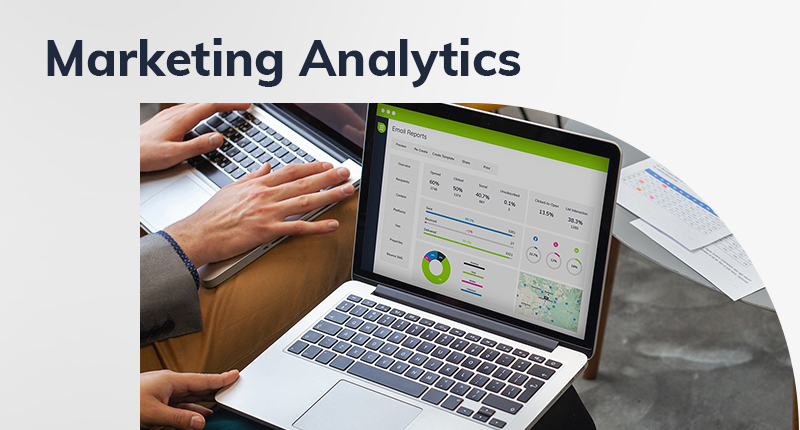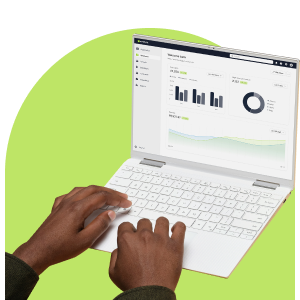We all know the age-old adage, “Knowledge is power”, and when it comes to improving your email engagement, this sentiment couldn’t be truer. This is because the more knowledge you have about how your recipients engage with your content, the more powerful you can make your emails – and the more likely you are to retain your audience and convert. So, how do you access this knowledge? With marketing analytics. In this blog post, we take a deep dive into three types of metrics you need to measure the performance of your bulk email campaigns quickly and effectively.
How to Ensure Your Campaigns Are Effective
A content marketing strategy isn’t something you create once and use forever. It needs to be constantly refined to ensure it’s in line with the market, your customers’ interests, and the results you desire.
This is why many marketers use a content marketing cycle for every campaign. This approach includes the following seven steps:
- Defining what you want the campaign to achieve
- Understanding your audience
- Assembling your content marketing strategy
- Knowing your channels
- Knowing your content
- Launching your content plan
- Analysing the results
Here, we focus on the final point in the cycle: how to analyse the results. Marketing analytics entails understanding how your campaign performed so you can gauge its business value and see how to refine and improve your content for future campaigns.
The starting point is knowing which metrics to use to measure the performance of your emails.

To be effective, your content marketing needs to be backed by a well-planned and thorough strategy, and we help you to develop one in this downloadable six-part white paper email series.
3 Types of Metrics to Track Your Email Performance
In marketing analytics, there are various types of metrics you can use to measure the performance of different content. Since this blog is focused on email marketing, we detail the three types of metrics you need to measure the effectiveness of your emails.
It’s well-enough knowing what you’re trying to determine but you also need to know how to access the data. This is why under each metric category we detail the specific metrics you need to access in a bid to measure how an email performed.
1. Consumption Metrics
Do your recipients even open your emails? Does some content interest them more than others? How many of your recipients click on your links? The answers to these questions can go a long way in guiding your email marketing strategy.
The good news is, you can get answers to these – and more – questions through consumption metrics. These help you to understand what your recipients’ consumption behaviours and preferences are in a bid for you to retain them as clients and convert more sales.
The specific metrics you need to measure content consumption are:
- Open Rate: This is the percentage of your recipients who opened a specific email out of the total number of people to whom you sent the email.
- Click-Through Rate: This is the percentage of people who clicked on at least one link in your email out of the total number of people you sent the email to, multiplied by 100.
- Click-to-Open Rate: This is the percentage of your recipients who opened and clicked on a link in your email. Those who have not opened the email are excluded from this metric, and so it indicates how the recipients respond once they have opened your email. This information is useful in understanding what content your recipients engaged with the most, so you can serve them more of it going forward.
- Platform Rate: Discover which devices were used to open your email. These could be desktop, mobile, or web-based systems.
It’s interesting to note our recent research for our latest Email Marketing Benchmarks Report found a high upward trend in the use of webmail applications which could be due to recipients using more web-based communication – like Gmail, Apple Mail, or Office 365 – or it could involve Mail Privacy Protection. This is a new protection policy where the host servers cache the content before the recipient has opened it. There are some strategies to identify and adjust your communication in this event.
2. Retention Metrics
Understanding how many of your recipients are opening and clicking on your emails is a good starting point, but to really track how effective your campaign is, you need to measure whether you have been able to retain the recipients who have subscribed to your content. This will indicate how engaging your content is.
Three metrics used to measure retention are:
- Subscribe Rate: The recipients who have joined your mailing list.
- Unsubscribe Rate: The percentage of your recipients who have unsubscribed from your communications.
- Complaint Rate: The recipients who complained about your email by reporting it as spam.
The key to your growth is ensuring you are gaining more subscribers than you are losing. You can track this by measuring the number of subscribes against the number of unsubscribes.
If your unsubscribe rate is high, consider reducing how often you send your emails, exercising good list hygiene, or reassessing your content (your consumption metrics will assist you with this).
3. Sharing Metrics
A terrific way to measure your content in marketing analytics is by determining whether your recipients choose to share it with their audiences. This is because people generally share content that is meaningful to them.
You can make it easier for your recipients to share online versions of your content by including links to social platforms in your emails. You can also include a share link to forward an online version of the mailer to others. Make sure these are tracked by your system analytics.
The metrics you need to measure content sharing are:
- Social Stats: This metric keeps track of the percentage of your contacts who used the social sharing icons in your email to share it on popular social media platforms, like Facebook, Twitter, or LinkedIn.
- Forwards: Make sure your marketing analytics can track when your email is forwarded to another email recipient.
Find out how your open, click-through, and click-to-open rates compare with the benchmarks in your specific industry by downloading our latest Email Marketing Benchmarks Report today.

Use Marketing Analytics to Measure Email Success
For communication to be effective, it needs a strategy, and the best strategies are backed by data. This is where marketing analytics comes in handy. The three types of metrics outlined in this blog post provide vital and real-time information about how your emails are performing with information on what your email recipients want to read and share. This enables you to tailor a powerful, data-led communication strategy.
Get a Platform That Monitors Email Performance
Your customers are continually telling you what they want in your email marketing – even if they don’t verbalise it. Marketing analytics will reveal all. Make sure you’re using a platform that’s equipped to measure the performance of your emails so you can create powerful campaigns that will help you retain clients and convert.



